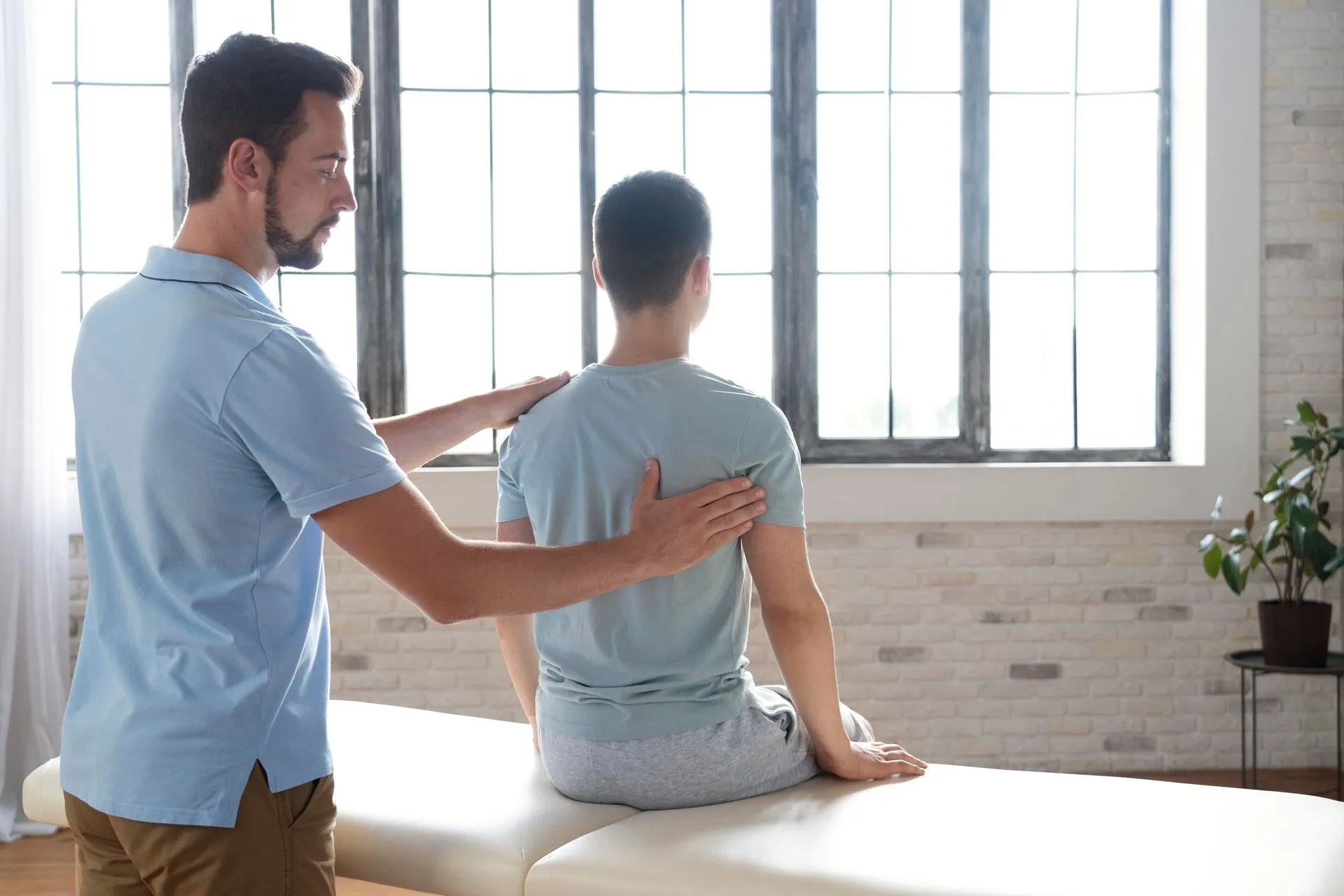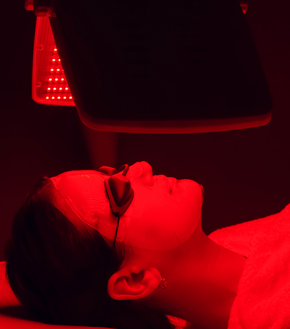
Ever found yourself rubbing your neck at 3 PM, wondering why it feels so tight and achy? Or maybe you’ve noticed your shoulders are permanently hunched up near your ears. If this sounds familiar, you’ve likely met the modern office worker’s nemesis: tech neck. But what exactly are the most common symptoms of tech neck, and how can you actually fix it for good?
The good news is, you don’t have to live with that discomfort. Think of this as your personal guide to shoulder and neck posture correction straight from a physiotherapist’s playbook. We’re going to move beyond just telling you to “sit up straight” and instead, give you practical, simple physiotherapy exercises for office workers that you can start doing right at your desk. Ready to feel better? Let’s dive in.
So, what is “tech neck” really doing to your body? Think of your head as a bowling ball—it’s designed to sit perfectly on top of your spine. But when you’re constantly looking down at a screen, that heavy ball shifts forward, forcing the delicate muscles in your neck and shoulders to strain just to hold it up. This constant strain is the real source of your pain.
And in any case you are wondering, “what are the most common symptoms of tech neck?” It often starts subtly. It’s not just a stiff neck. Do you get frequent tension headaches? Feel a constant knot between your shoulder blades? Maybe you notice your shoulders are starting to round forward. These are all signs that your workout posture and your desk posture are out of sync.
The goal of correcting posture, shoulders and neck isn’t just about looking more confident, it’s about creating the correct posture to improve upper back and neck pain for good. Now that we know the ‘why’ behind the ache, let’s look at how you can set up your workspace to support this.
Let’s be honest, fighting neck pain starts before you even do a single stretch—it starts with your desk setup. Think of your chair and desk like the foundation of your posture. If they’re not supporting you properly, it’s an uphill battle all day. This is why physiotherapy at work begins with your environment; no amount of exercise can completely undo the strain of the eight hours spent in a poorly set-up chair.
So, what does proper desk posture for neck pain actually look like? It’s simpler than you might think. Let’s break it down into simple, actionable steps.

Getting your seating right is the first step. Adjust your chair so your feet rest flat on the floor, and if they don’t, a small footrest works perfectly. You want your knees to be level with your hips, and your elbows resting at a relaxed 90-degree angle when you type.
Where you look matters most for your neck. Place your screen about an arm’s length away, with the very top of the monitor at or just below your eye level. This stops you from dropping your head forward and craning your neck all day.
Keep your keyboard and mouse close together, right in front of you. Your wrists should stay in a neutral, straight position, not bent upwards or downwards. This helps you avoid reaching forward, which is a common cause of those rounded shoulders we’re trying to fix.
Even the perfect setup needs a break! Set a simple reminder to stand up, move around, and do a quick stretch every 30 to 60 minutes. These brief pauses are crucial for releasing built-up muscle tension and keeping your circulation going.Getting these basics right is a huge step in learning how to correct shoulder and neck posture. Remember the bowling ball? This is how you put it back on its stand.
Now that your workspace is set up to support you, let’s get to the active part of your recovery—the exercises. This is where we put the “therapy” in physiotherapy exercises for office workers. These moves are specifically chosen to undo the tightness and weakness that desk life creates, giving you a clear path for shoulder and neck posture correction.
Think of these posture stretches as a reset button for your muscles. They’re perfect for when you feel that familiar stiffness creeping in.
These posture correction exercises build the muscle endurance you need to maintain good posture all day without thinking about it.
Stuck on a long call? Use these tiny posture exercises to stay loose.
Pro Tip: Just 2-3 minutes of these movements every hour can make a world of difference.
You might be wondering about a brace to correct neck and back posture. While these can provide temporary awareness by reminding you not to slouch, they are not a long-term solution. Think of them as training wheels. The real, lasting change comes from strengthening your muscles with the posture correction exercises we just covered. For the best results, any use of a brace should be guided by your physiotherapist.
You might be wondering about a brace to correct neck and back posture. While these can provide temporary awareness by reminding you not to slouch, they are not a long-term solution. Think of them as training wheels. The real, lasting change comes from strengthening your muscles with the posture correction exercises we just covered. For the best results, any use of a brace should be guided by your physiotherapist.
So you’ve got your desk set up and know the key exercises. But how do you make good posture automatic? The answer isn’t complicated workouts, but simple habits that fit into your existing routine.
A powerful way to remember is to “stack” a micro-stretch with a daily task. For example: “What’s the best posture exercise I can do at my desk?” Try doing chin tucks while waiting for a file to download, or shoulder rolls during a phone call. These tiny moments add up.
Don’t forget your breath! When we focus, we often breathe high in our chest, tightening our shoulders. Several times daily, take two deep belly breaths, feeling your shoulders relax on the exhale.
Finally, set a gentle reminder to stand up and move for just 60 seconds every half hour. This isn’t just a mental break, but a vital reset for the spine and muscles we’ve been working to strengthen. These small, consistent habits close the gap between knowing what to do and actually fixing your posture for good.
We’ve covered a lot, from setting up your desk to simple exercises that fight tech neck at its source. Remember, it all connects: a supportive workspace, consistent stretches, and small movement breaks work together to reverse the strain of desk life. This isn’t about perfection, but about making small, daily choices that add up to a pain-free neck and shoulders.
If you’ve tried these tips but still struggle with constant neck and shoulder pain, our team at Stretch-abilitation is here to help. We offer professional Physiotherapy services to create a personalized plan that gets you back to feeling your best. Give us a call at (341) 221-1070 or visit https://stretchabilitation.com/physiotherapy/ to learn more about how we can help you feel better.
To improve your posture at a desk, ensure your feet are flat on the floor, your back is supported, and your elbows are at a 90-degree angle while typing. Keep your computer monitor at eye level to prevent neck strain and take frequent breaks to stand and move around.
Anytime you're at your desk, you should be seated in the "90-90-90 Position." This means that your elbows should be bent at a 90-degree angle, your hips should be at a 90-degree angle, and your knees should be at a 90-degree angle, with your feet flat on the floor beneath your chair.
Proper sitting posture at a computer involves aligning your head, shoulders, and hips, keeping your feet flat, and adjusting your chair and monitor to support your body.
Neck pain from sitting at a desk is often caused by poor posture, incorrect monitor and chair height, and prolonged periods of inactivity.
The worst sitting postures include slouching, hunching over, and sitting with a twisted spine, all of which can lead to pain by putting pressure on your back, neck, and muscles.
Take the first step toward a stronger, healthier you. Whether you’re overcoming injury, easing pain, or boosting performance, Stretch-abilitation is here to guide you every step of the way. Book your consultation today and start your journey toward full recovery and renewed strength.



At Stretch-abilitation, we’re dedicated to restoring movement, relieving pain, and enhancing performance through advanced recovery therapies. From stone massage and physiotherapy to cryotherapy and infrared sauna, our evidence-based treatments help you heal faster, feel stronger, and live better. Experience expert care, modern technology, and personalised wellness designed to rebuild your strength and restore your balance.
